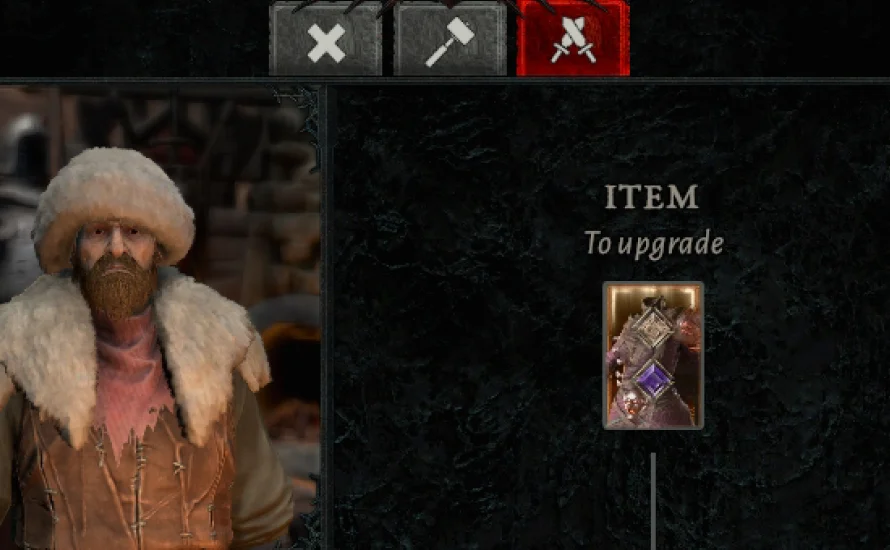Introduction
The Blacksmith is an important NPC that helps players with their progression and adventures across Sanctuary. This guide covers the benefits of Salvaging, Tempering, and Masterworking items, and how to make use of the Blacksmith’s features in Diablo 4 to improve equipment and extract valuable materials.
Every time a character dies, worn equipment also suffers a Durability blow, but paying a little bit of Gold to the Blacksmith restores its functionality.
How to Unlock the Blacksmith
On your very first character, you will receive a priority quest objective to visit Zivek, the Blacksmith in Kyovashad, located within the Fractured Peaks. Completing this quest rewards you with experience.
However, the true value of meeting the Blacksmith lies in the core progression loop of crafting, tempering, masterworking gear, salvaging equipment to gain materials, and the ability to repair damaged gear. These loops are essential to your progression and advancement throughout the world of Sanctuary.
After completing the intro quest and unlocking the Blacksmith, the NPC can be found throughout the world in various outposts, towns, and cleared Strongholds. This allows characters to access the Blacksmith’s services conveniently and efficiently, without having to return to Kyovashad every time.
How to Salvage
Salvaging a piece of gear grants you crafting materials necessary for upgrading your equipment. The rarity of the item salvaged generally determines the quality of materials acquired.

Furthermore, salvaging upgraded gear enables you to get back some of the upgrade materials used on that item. For example, if an item has been socketed with a Gem, the Gem is returned to the inventory. Check out our Jeweler Guide for more information about Gems.
Jeweler GuideAdditionally, salvaging an item also unlocks its Transmog appearance for the Wardrobe.
All items in the inventory of the character can be quickly salvaged, but Legendary, Unique, and altered items (enchanted, socketed, transmogged) are excluded from this process. Individual items can be selected by using a hotkey (space bar on PC), and these can then be salvaged with a single click when visiting the Blacksmith. Effective inventory management is key to saving time between adventures!
Forge Equipment
In Vessel of Hatred, the possibility to craft Legendary and Mythic Unique caches was added to the Blacksmith.
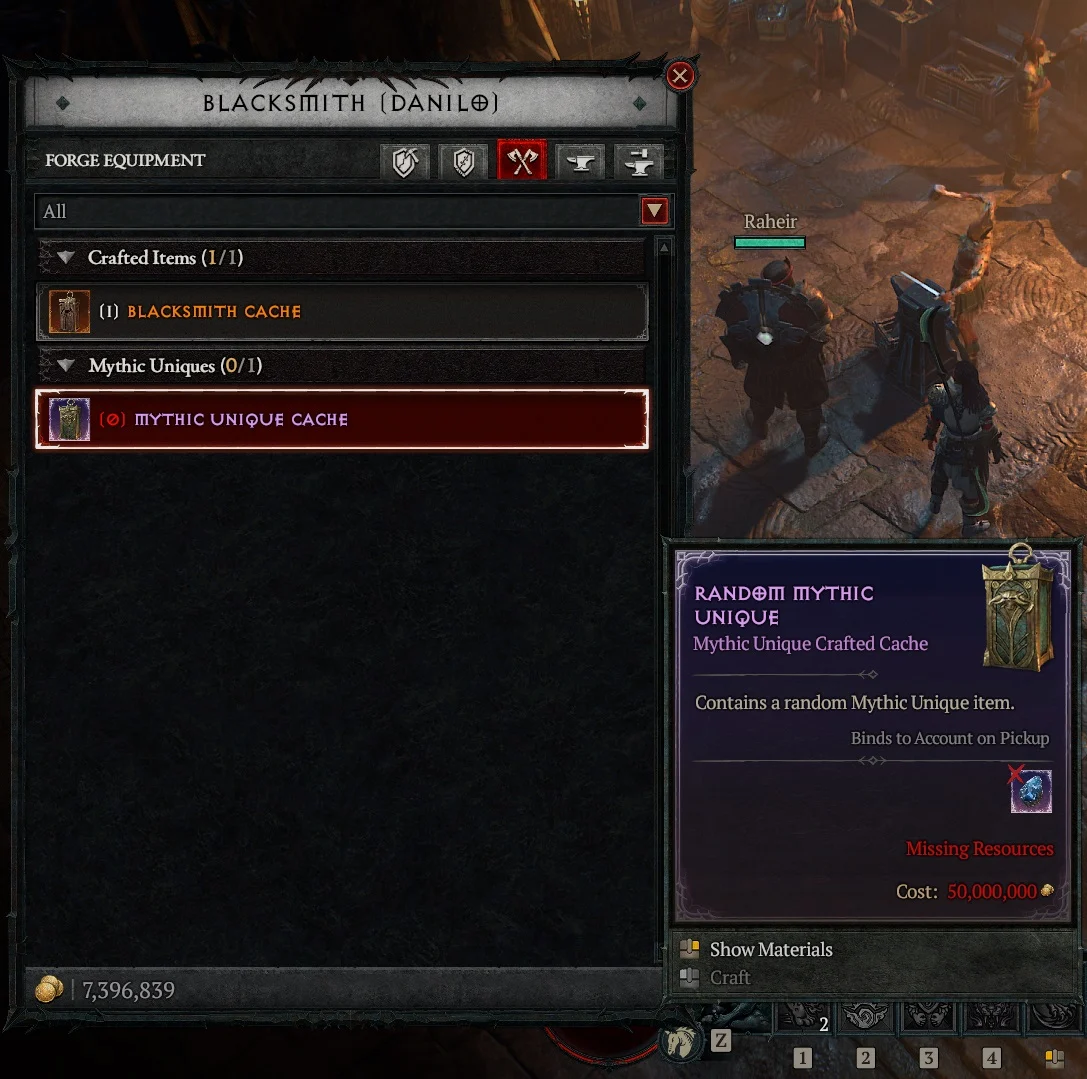
The Blacksmith Cache contains one Legendary item (or of higher quality). To craft the cache, you will need:
- 200x
 Rawhide
Rawhide - 200x
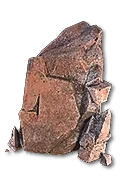 Iron Chunk
Iron Chunk - 200x
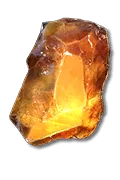 Veiled Crystal
Veiled Crystal - 5x
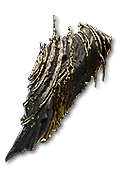 Coiling Ward
Coiling Ward - 5x
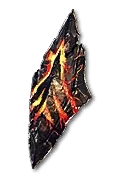 Abstruse Sigil
Abstruse Sigil - 5x
 Baleful Fragment
Baleful Fragment - 1,000,000 Gold
You can also craft a random Mythic Unique using 2x ![]() Resplendent Spark. Be aware that you cannot select the Mythic Unique you will receive, and you may be disappointed.
Resplendent Spark. Be aware that you cannot select the Mythic Unique you will receive, and you may be disappointed.
Tempering
In Diablo 4, upgrading gear is an important part of character progression. During your adventures, you will come across a variety of items that may be improved in several ways, one of those being Tempering!
Tempering allows you to add one or more affixes to a rare or legendary item using recipes found throughout Sanctuary.
Recipes come in the form of Tempering Manuals. They can drop from most content, such as Whisper Caches, Nightmare Dungeons, Bosses, and more! Once a manual is acquired, it is registered in your codex, and you can use it to temper as many times as you want.
Tempering will cost gold and resources such as ![]() Iron Chunk,
Iron Chunk, ![]() Veiled Crystals,
Veiled Crystals, ![]() Baleful Fragments, or
Baleful Fragments, or ![]() Abstruse Sigils (the amount varies depending on the item’s rarity and the recipe used).
Abstruse Sigils (the amount varies depending on the item’s rarity and the recipe used).

For a more in-depth guide on how to use the tempering system, head to our Tempering guide below:
Tempering GuideMasterworking
Masterworking allows you to upgrade all of your item’s affixes. You can upgrade an item a maximum of 12 times, and upgrading will either increase all affixes by 5% or one random affix by 25%. If you are not happy with your rolls, you can reset your masterwork, but be aware that you will not receive your materials back.

To Masterwork, you will need ![]() Obducite which drop in Nightmare Dungeons.
Obducite which drop in Nightmare Dungeons.
Visit our guide for additional information about Nightmare Dungeons.
Nightmare DungeonsFor a more in-depth guide on using the Masterworking system, please see our guide below.
Masterworking GuideHow to Repair Gear
The Durability of gear decreases by 10% with each death, and at 0 Durability, item bonuses are partially disabled, making your character significantly weaker. Because of this, it is very important to repair equipped gear whenever necessary. Repairing an item requires you to spend Gold. The amount of Gold required is dependent on the items’ rarity and Durability level.
